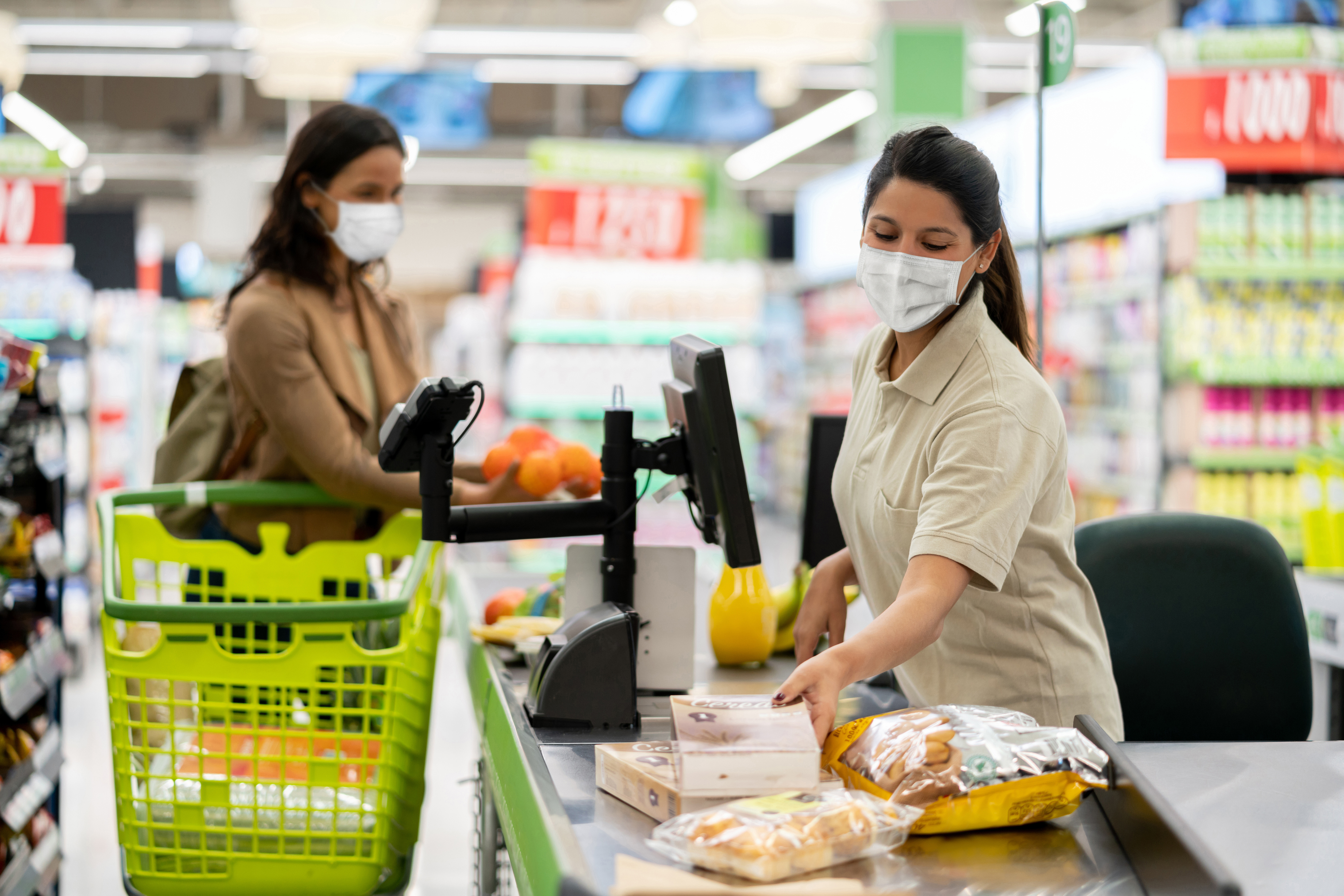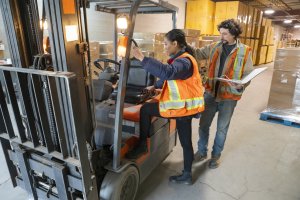Among the many challenges the Biden-Harris administration will face upon taking office is how to expand economic activity while protecting the safety of the nation’s workers. As the COVID-19 pandemic grew in strength, many workplaces moved to remote work or shut down entirely to avoid the contagion. But some work cannot be done remotely, and millions of workers risked their lives by continuing to go into work to care for the nation’s sick and elderly, to help families put food on their tables, to get people to and from work, and to ensure public safely.
The toll on these front-line workers—and on their families and communities—has been enormous. Hundreds of thousands of workers— employed in hospitals and nursing homes, emergency response, meat and poultry factories, public transportation, farms, grocery stores and warehouses, prisons and jails, and many others setting —have been sickened and thousands of them have died.
COVID-19 has had a disproportionate and tragic impact on communities of color: working-age Black, Latinx and American Indian/Alaska Native people are at greatly increased risk of COVID-19 disease and death. Much of this increase is driven by employment patterns: Racial and ethnic minorities are overrepresented in the “essential” jobs that cannot be done by teleworking from home. The jobs held by these workers put them in close contact with other workers and the public, and these workers are often given inadequate or no personal protective equipment (PPE). Many of these workers travel to and from work in crowded public or semi-private transportation. Since the virus does not stop at the door of the factory, nursing home, prison, or subway car, those who are infected at work bring the epidemic out into their communities and homes.
The federal government has no national plan to control workplace exposures to the virus. The Occupational Safety and Health Administration (OSHA) is the primary government agency charged with ensuring workers are safe on the job, but it has not taken an active role in stemming the epidemic. Faced with thousands of worker complaints about inadequate workplace protections, the Trump Administration elected not to scale up OSHA’s authority, budget, or enforcement activities
The many workers who never had the opportunity to protect themselves by working remotely are now being joined by others newly returning to worksites—many of them now exposed to potentially dangerous conditions, as community spread of COVID-19 infection is increasing in most areas of the US.
All workers need to be protected. If workplace exposures are not controlled, more workers—along with members of their families and communities—will be infected, causing more illness and death, and threatening the ability of the nation to resume economic growth.
To advance the discussion on how the incoming administration might take steps to protect workers and re-open the economy, we have written a report Halting Workplace COVID-19 Transmission: An Urgent Proposal to Protect American Workers. In this report, we review the conditions under which COVID-19 has continued to spread through workplace transmission and assess the failures of OSHA and the federal government to protect workers from exposure. We recommend an eleven-point program —led by the federal government, working in close coordination with state and local public health authorities—for stopping workplace transmission of COVID-19.
The following are components of a comprehensive program the Biden-Harris Administration could be implemented immediately, for the most part without additional resources or Congressional authorization.
1. Elevate Worker Protection to the White House and Establish a National COVID-19 Worker Protection Plan. Protecting workers, which is at the core of both controlling the pandemic and reopening the economy, requires resolute national leadership, starting in the Oval Office. It must also involve all agencies that have authority over activities at workplaces where workers are exposed. This includes the Centers for Medicare and Medicaid Services (nursing homes and hospitals), the U.S. Department of Agriculture (meat and poultry plants), and the Department of Transportation ( airplanes, passenger trains, interstate buses, and other modes of mass transportation), and others with workers under their jurisdictions.
2. Require All Employers to Develop and Implement Infection Control Plans through an OSHA Emergency Temporary Standard. The Biden-Harris campaign has promised President Biden will issue an OSHA Emergency Temporary Standard. Enforceable standards are OSHA’s most powerful and effective tool for protecting workers. The tens of thousands of sick workers in nursing homes, health care facilities and the food system are powerful proof that recommendations alone are not adequately effective. The failure of OSHA to issue an Emergency Temporary Standard has meant that the agency is not putting out a clear message that employers are required to provide safe workplaces. As a result, many employers are not taking steps that could prevent transmission and save lives.
3. Expedite Workplace Case Reporting and Response. Failure to identify work-related case clusters can delay important steps to reduce future cases. Employers should be required to report clusters of COVID cases to OSHA and local health departments.
4. Encourage Collaborative Workplace Infection Control Efforts. Workers have the most to lose if the plan fails, but any plan is less likely to succeed if workers do not have some ownership in the program. Any workplace COVID-prevention plan must be developed, implemented, and continually evaluated with the input and collaboration of the workers.
5. Increase PPE Production. The administration needs to make the production of PPE—especially N95 and other more protective respirators designed to protect against exposure to airborne viruses—a top national priority and invoke the Defense Production Act to increase production of PPE significantly.
6. Increasing the Consequences of Noncompliance. One of the objectives of the fines issued by OSHA is to send a message to other employers that, to avoid similar penalties, they should make their workplaces safer. Following inspections at meat factories where hundreds of workers have been infected, OSHA issued tiny fines, so small they have little impact on the huge global corporations which have not adequately protected their workers. In fact, they send the unfortunate message that employers need not fear an OSHA inspection.
7. Amplify the Impact of Inspections. OSHA has a very powerful tool to amplify the deterrent effect of its inspections: by using press releases and social media promotion to publicize the results of those inspections and employer responsibilities, OSHA can inform and persuade many additional employers to make efforts to eliminate workplace hazards. A recent study found that each OSHA press release reporting citations issued after an inspection generated as much compliance with OSHA standards as 210 additional inspections. Given the enormity of the crisis, OSHA should be dramatically raising its public profile and informing employers in no uncertain terms that it is their obligation to make sure their workers can work safely. Instead, the Department of Labor has gone dark, and is no longer issuing press releases describing the results of OSHA inspections.
8. Encourage Innovation in the States. A strong, clear national standard enforced by OSHA would protect all workers and help firms with multiple locations avoid having to meet different requirements in different states, but even if federal OSHA steps up to the plate in the new Administration, states can take leadership roles in developing effective approaches to protecting workers and reducing exposures.
9. Better Protect Whistleblowers: Encourage Workers to Raise Safety Concerns. Whistleblowers play a vital role in identifying hazards and protecting themselves and their coworkers. Employers should welcome the concerns they raise, because workers are often the first to spot conditions that may result in exposure to themselves, to other workers, or to the public. A national public focus on retaliation issues is necessary to bring badly needed improvements at workplaces across the country. To be effective, however, this message must come from the highest levels of the federal government. Very senior federal officials should maintain a constant presence in traditional and social media, warning employers that retaliation for raising safety concerns is against the law and won’t be tolerated.
10. Support Workplace Testing. The federal government, utilizing the infrastructure and payment mechanisms of the Centers for Medicare and Medicaid Services, should subsidize or cover the costs of workplace viral testing, setting reimbursement rates and imposing quality assurance systems on the firms providing the testing. Workers who have been exposed to the virus or who may be infected need to be tested and encouraged (and paid) to stay home.
11. Develop and Implement a Worker Protection Monitoring and Research Agenda. The National Institute for Occupational Safety and Health (NIOSH/CDC) has a wealth of expertise that should be brought to bear on evaluating workplace hazards, developing control technologies to mitigate the hazards, and analyzing and reporting the distribution of diseases and injuries across different working populations. Better systems for collecting and reporting pandemic-related data must be put in place so that properly-targeted mitigation policies and strategies can be implemented, evaluated, and adjusted to optimize benefits for worker and community health protection while preserving economic activity.






